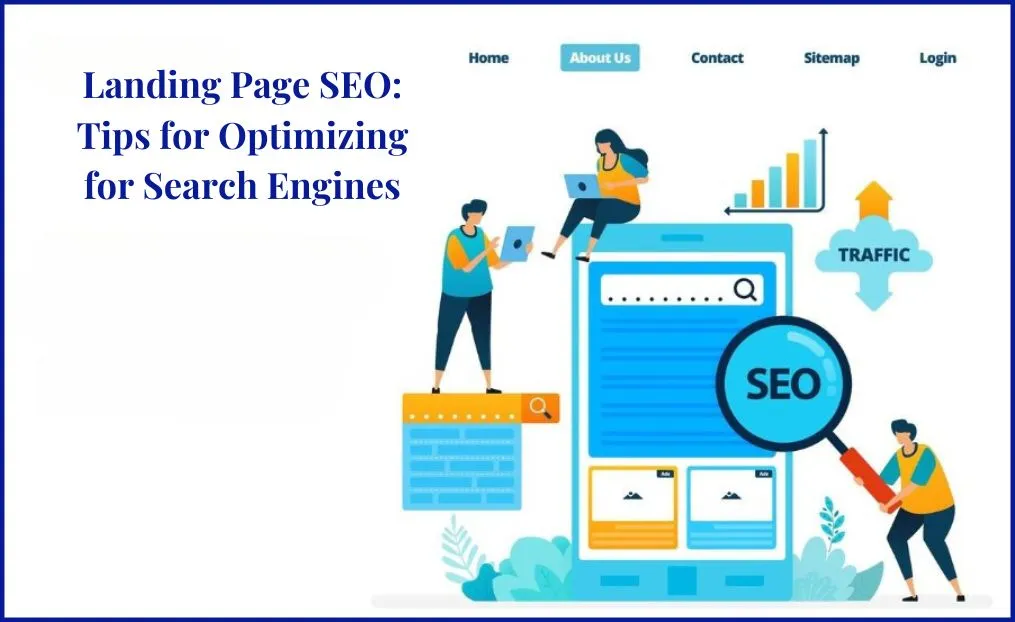
Are you tired of throwing money at pay-per-click (PPC) marketing without seeing a significant return on investment (ROI)? You’re not alone. Many businesses struggle to convert website visitors into paying customers, missing out on valuable leads and opportunities. But what if you could turn the tables and make your PPC marketing efforts work for you? In this comprehensive guide, we’ll probe the world of PPC marketing, covering everything from website design and conversion optimization to social media advertising and cold calling services. Get ready to transform your business and start generating the leads and sales you deserve.
Setting Up for Success
For any PPC marketing campaign to be successful, it’s necessary to lay the groundwork before launching your ads. This chapter will guide you through the critical steps to set yourself up for success, ensuring you get the most out of your PPC efforts and increase your ROI.
Defining Your Target Audience
For a PPC campaign to resonate with potential customers, you need to understand who they are, what they want, and what drives their purchasing decisions. To define your target audience, start by gathering data about your existing customers, such as demographics, interests, and pain points. Analyze your website analytics, social media insights, and customer feedback to identify patterns and trends.
By understanding your target audience, you can create buyer personas that will help you tailor your ad messaging, landing page design, and bidding strategy to effectively target and convert high-quality leads. Be mindful of, the more specific you are about your target audience, the better you’ll be able to connect with them and drive conversions.
Identifying Your Unique Selling Proposition (USP)
Audience attention is scarce, and to stand out in a crowded market, you need a compelling USP that sets your business apart from the competition. Your USP should clearly communicate the unique benefits and value that your product or service offers to customers.
Take, for example, the website design services offered by our company. Our USP lies in our ability to tailor designs based on each business’s unique needs, harnessing the power of our “never-miss-a-client” platform to achieve results that exceed expectations. By highlighting this USP, we can attract high-quality leads and drive conversions.
Plus, a well-defined USP helps you create focused ad messaging, landing page copy, and even social media content that resonates with your target audience, ultimately driving more conversions and increasing your ROI.
Keyword Research and Planning

Little do many businesses know, but keyword research and planning are the foundation of a successful PPC marketing campaign. It’s the process of identifying and selecting the most relevant and high-performing keywords that will drive targeted traffic to your website, increase conversions, and ultimately boost your ROI.
Brainstorming Keywords with Google Keyword Planner
Key to a successful PPC campaign is brainstorming a list of relevant keywords that resonate with your target audience. Google Keyword Planner is a powerful tool that can help you generate a list of keywords related to your business, product, or service. By using Keyword Planner, you can identify keywords with high search volume, competition, and cost-per-click (CPC), allowing you to make informed decisions about which keywords to target.
For instance, if you’re a website design company, you can use Keyword Planner to identify keywords like “conversion-focused website design” or “ecommerce website development”. This will give you an idea of the keywords your target audience is searching for and help you create targeted ad campaigns that drive relevant traffic to your website.
Analyzing Competitor Keywords
Planning your keyword strategy involves analyzing your competitors’ keywords to identify gaps and opportunities in the market. By analyzing your competitors’ keywords, you can identify areas where they’re struggling and capitalize on those opportunities to outrank them.
For example, if you’re a cold calling service provider, you can analyze your competitors’ keywords to identify areas like “B2B lead generation” or “sales lead generation services”. This will give you an idea of the keywords your competitors are targeting and help you create a more effective keyword strategy that sets you apart from the competition.
Brainstorming competitor keywords involves identifying your top competitors, analyzing their website content, and identifying the keywords they’re targeting. You can use tools like Ahrefs or SEMrush to analyze your competitors’ keywords and identify areas of opportunity.
Creating a Keyword Strategy
Any successful PPC campaign starts with a solid keyword strategy. A keyword strategy involves identifying and selecting the most relevant and high-performing keywords that align with your business goals and target audience.
To create a keyword strategy, you need to identify your target audience, their pain points, and the keywords they’re searching for. You can use tools like Google Keyword Planner, Ahrefs, or SEMrush to identify relevant keywords and create a list of target keywords. From there, you can create ad groups, write targeted ad copy, and set bids that drive conversions and increase your ROI.
To get the most out of your keyword strategy, you need to continually monitor and optimize your keywords, ad copy, and bids to ensure maximum ROI. This involves tracking your keyword performance, identifying areas of improvement, and making data-driven decisions to optimize your campaigns.
Crafting Compelling Ad Copy
Many advertisers struggle to create ad copy that resonates with their target audience, resulting in low click-through rates and poor conversion rates. However, crafting compelling ad copy is crucial to driving traffic to your website, generating leads, and ultimately increasing your ROI.
Writing Attention-Grabbing Headlines
Copy that grabs attention is necessary to standing out in a crowded online marketplace. Your headline should be clear, concise, and relevant to your target audience. It should also highlight the unique benefits of your product or service and entice users to click on your ad. For example, if you’re a business offering website design services, your headline could be “Transform Your Online Presence with Our Expert Website Design”.
A well-crafted headline can make all the difference in driving traffic to your website. It’s necessary to test different headlines to see which one performs best. You can use tools like Google Ads or Facebook Ads to test multiple headlines and determine which one generates the highest click-through rate.
Creating Persuasive Descriptions
To craft persuasive descriptions, you need to understand your target audience’s pain points and desires. Your description should provide a clear and concise overview of your product or service, highlighting its benefits and features. It should also include a clear call-to-action, encouraging users to click on your ad and take action. For example, if you’re a business offering ecommerce services, your description could be “Take your online store to the next level with our expert ecommerce solutions. Get started today and start selling more!”
Descriptions should be written in a tone that resonates with your target audience. They should be informative, yet persuasive, and should include relevant keywords to improve ad relevance and ranking.
Descriptions are often the deciding factor in whether a user clicks on your ad or not. By crafting persuasive descriptions, you can increase your click-through rate, drive more traffic to your website, and generate more leads.
Optimizing Ad Extensions
Persuasive ad extensions can make your ads more visible, increasing your click-through rate and driving more traffic to your website. Ad extensions provide additional information about your business, such as your address, phone number, and reviews. They can also include calls-to-action, encouraging users to take action. For example, if you’re a business offering cold calling services, your ad extension could include a call-to-action, such as “Get a Free Consultation Today!”
Ad extensions can also improve your ad relevance and ranking, increasing your visibility and driving more traffic to your website. By optimizing your ad extensions, you can increase your ROI and drive more conversions.
It’s necessary to test different ad extensions to see which ones perform best. You can use tools like Google Ads or Facebook Ads to test multiple ad extensions and determine which ones generate the highest click-through rate.
Landing Page Optimization

Designing for Conversion
Optimizing your landing page design is crucial for conversion. A clean and simple design can help guide your visitors’ attention to the call-to-action (CTA) and increase the chances of conversion. Make sure your design brand is consistent throughout the page, using colors, fonts, and imagery that align with your business’s overall aesthetic. A well-designed landing page can help establish trust with your customers and make them more likely to convert.
A clear and concise headline, paired with a prominent CTA, can help drive conversions. Use action-oriented language to encourage visitors to take action, and make sure your CTA stands out from the rest of the page. By designing your landing page with conversion in mind, you can increase the chances of turning your visitors into premium paying customers.
Streamlining the User Experience
One of the most critical aspects of landing page optimization is streamlining the user experience. A cluttered and confusing page can lead to frustration and a high bounce rate. Make sure your page is easy to navigate, with a clear and concise message that resonates with your target audience.
Streamline your page by removing any unnecessary elements, such as excessive text or distracting imagery. Use white space effectively to create a clean and modern design that guides visitors towards the CTA. By streamlining the user experience, you can increase engagement and conversion rates.
Streamlining the user experience is all about creating a seamless and intuitive experience for your visitors. By making it easy for them to find what they’re looking for and take action, you can increase the chances of conversion and ultimately drive more revenue for your business.
A/B Testing for Improvement
For continuous improvement, A/B testing is a must. By testing different variations of your landing page, you can identify what works and what doesn’t, and make data-driven decisions to optimize your page for better conversions.
A/B testing can help you identify the most effective design elements, such as headlines, CTAs, and imagery, that drive conversions. By testing different variations, you can refine your design and create a page that resonates with your target audience.
Conversion optimization is all about testing and refining your approach. By using A/B testing to identify areas for improvement, you can increase conversions and drive more revenue for your business. Recall, even small changes can make a significant impact on your ROI, so keep testing and refining your approach to maximize your results.
Bidding and Budgeting Strategies
After setting up your PPC campaign, it’s vital to develop a solid bidding and budgeting strategy to maximize your return on investment (ROI). This involves allocating your budget effectively, choosing the right bidding model, and managing your ad spend to drive conversions and revenue.
Setting Realistic Budgets
To ensure the success of your PPC campaign, you need to set realistic budgets that align with your business goals. This involves understanding your customer acquisition costs, conversion rates, and the average value of each customer. By setting a realistic budget, you can avoid overspending and ensure that you’re getting the most out of your PPC campaign.
When setting your budget, consider the following factors: your target audience, ad placement, ad format, and bidding strategy. Additionally, make sure to allocate your budget across different campaigns and ad groups to maximize your ROI. By doing so, you can drive more leads, increase conversions, and ultimately grow your business.
Choosing the Right Bidding Model
An effective bidding strategy is crucial to the success of your PPC campaign. There are several bidding models to choose from, including cost-per-click (CPC), cost-per-thousand impressions (CPM), and target cost-per-acquisition (CPA). Each bidding model has its advantages and disadvantages, and the right choice depends on your business goals and target audience.
For instance, if you’re looking to drive conversions and sales, a CPA bidding model may be the most effective. On the other hand, if you’re looking to increase brand awareness and drive traffic to your website, a CPM bidding model may be a better choice. By choosing the right bidding model, you can optimize your ad spend and drive more revenue for your business.
Right from the start, it’s vital to monitor and adjust your bidding strategy regularly to ensure that you’re getting the most out of your PPC campaign. This involves tracking your key performance indicators (KPIs), such as conversion rates, cost-per-conversion, and return on ad spend (ROAS).
Managing Ad Spend for Maximum ROI
With the right bidding strategy in place, it’s vital to manage your ad spend effectively to maximize your ROI. This involves tracking your ad spend across different campaigns and ad groups, identifying areas of waste, and optimizing your budget allocation.
By regularly monitoring your ad spend, you can identify opportunities to reduce waste and optimize your budget allocation. This involves pausing underperforming ads, adjusting your bidding strategy, and allocating more budget to high-performing campaigns and ad groups. By doing so, you can drive more conversions, increase revenue, and ultimately grow your business.
Managing your ad spend effectively also involves leveraging automation tools and scripts to streamline your PPC campaign management. This can help you save time, reduce manual errors, and optimize your ad spend for maximum ROI.
Launching and Monitoring Your Campaigns
Despite the importance of planning and strategy, the true test of a PPC campaign’s success lies in its execution and ongoing optimization. In this chapter, we’ll examine the nitty-gritty of launching and monitoring your campaigns, ensuring you’re getting the most out of your ad spend.
Setting Up Conversion Tracking
For any PPC campaign to be successful, it’s imperative to track conversions accurately. This allows you to measure the effectiveness of your ads, identify areas for improvement, and make data-driven decisions to optimize your campaigns. To set up conversion tracking, you’ll need to define what constitutes a conversion for your business, such as form submissions, phone calls, or purchases. Once you’ve identified your conversion goals, you can set up tracking codes on your website to monitor and record these actions.
By accurately tracking conversions, you’ll be able to see which ad groups, ads, and keywords are driving the most valuable actions for your business, allowing you to optimize your campaigns for better ROI.
Launching and Testing Ad Groups
Tracking the performance of your ad groups is crucial to understanding what’s working and what’s not. When launching and testing ad groups, it’s imperative to have a clear understanding of your target audience, their pain points, and the messaging that resonates with them. By creating targeted ad groups that speak directly to your ideal customer, you’ll be able to drive more qualified leads and increase conversions.
To ensure the success of your ad groups, it’s imperative to test different ad creatives, targeting options, and bidding strategies. This will allow you to identify which combinations drive the best results for your business and optimize your campaigns accordingly.
Testing ad groups also provides an opportunity to refine your brand’s messaging and design, ensuring consistency across all touchpoints and reinforcing your business’s unique value proposition.
Monitoring and Optimizing Campaign Performance
Your PPC campaigns are not set-it-and-forget-it endeavors. To achieve optimal ROI, you need to continuously monitor and optimize your campaigns, making adjustments as needed. This includes tracking key metrics such as cost per conversion, conversion rate, and return on ad spend (ROAS). By regularly reviewing these metrics, you’ll be able to identify areas for improvement and make data-driven decisions to optimize your campaigns.
With the right monitoring and optimization strategies in place, you’ll be able to increase conversions, reduce waste, and drive more revenue for your business. This might involve adjusting bidding strategies, refining targeting options, or creating new ad creatives that better resonate with your target audience. By staying on top of your campaign performance, you’ll be able to maximize your ROI and achieve your business goals.
Advanced PPC Techniques
Unlike basic PPC strategies, advanced techniques require a deeper understanding of your target audience, market trends, and campaign optimization. By incorporating these advanced techniques into your PPC marketing strategy, you can significantly increase your ROI and stay ahead of the competition.
To take your PPC marketing to the next level, consider the following advanced techniques:
- Using negative keywords effectively
- Leveraging ad scheduling and location targeting
- Implementing retargeting and remarketing
| Technique | Description |
|---|---|
| Using negative keywords effectively | Identify and exclude irrelevant keywords to reduce wasted spend and improve ad relevance |
| Leveraging ad scheduling and location targeting | Target specific audiences based on time of day, day of the week, and geographic location to increase conversions |
| Implementing retargeting and remarketing | Reach users who have interacted with your website or business to re-engage and convert them into customers |
Using Negative Keywords Effectively
To optimize your PPC campaigns, it’s crucial to identify and exclude irrelevant keywords that are wasting your budget. By using negative keywords effectively, you can reduce unwanted clicks, improve ad relevance, and increase conversions.
For example, if you’re a business that sells high-end designer clothing, you may want to exclude keywords like “cheap” or “discount” to avoid attracting price-sensitive customers who are unlikely to convert.
Leveraging Ad Scheduling and Location Targeting
Keywords and demographics are not the only factors that influence user behavior. By leveraging ad scheduling and location targeting, you can target specific audiences based on time of day, day of the week, and geographic location.
Using ad scheduling, you can adjust your bids or pause your ads during times when your target audience is less active. For instance, if you’re a B2B business, you may want to target users during weekdays when they’re more likely to be at work.
Location targeting allows you to target users based on their geographic location, which is particularly useful for businesses with physical stores or those that offer location-based services.
Implementing Retargeting and Remarketing
Using retargeting and remarketing, you can reach users who have interacted with your website or business, re-engage them, and convert them into customers.
Remarketing involves targeting users who have abandoned their shopping carts, visited specific pages on your website, or engaged with your brand on social media. By serving them personalized ads, you can re-ignite their interest and encourage them to complete a purchase.
For example, if a user has visited your website but hasn’t converted, you can serve them a retargeting ad with a special offer or discount to incentivize them to return and complete a purchase.
Conclusion
Now that you’ve reached the end of this ultimate guide to PPC marketing, you should be equipped with the knowledge and strategies needed to increase your ROI and take your business to the next level. By implementing the tips and techniques outlined in this guide, you’ll be able to drive more qualified leads to your website, convert them into paying customers, and ultimately grow your business.
Note, a successful PPC marketing campaign requires a combination of effective website design, conversion-focused strategies, and targeted advertising. By leveraging the power of automation, AI, and expert lead finders, you can maximize your ROI and stay ahead of the competition. Whether you’re looking to boost your brand reputation, drive sales, or simply increase your online visibility, this guide has provided you with the tools and insights needed to achieve your goals. So, what are you waiting for? Put these strategies into action and start seeing the results for yourself!









